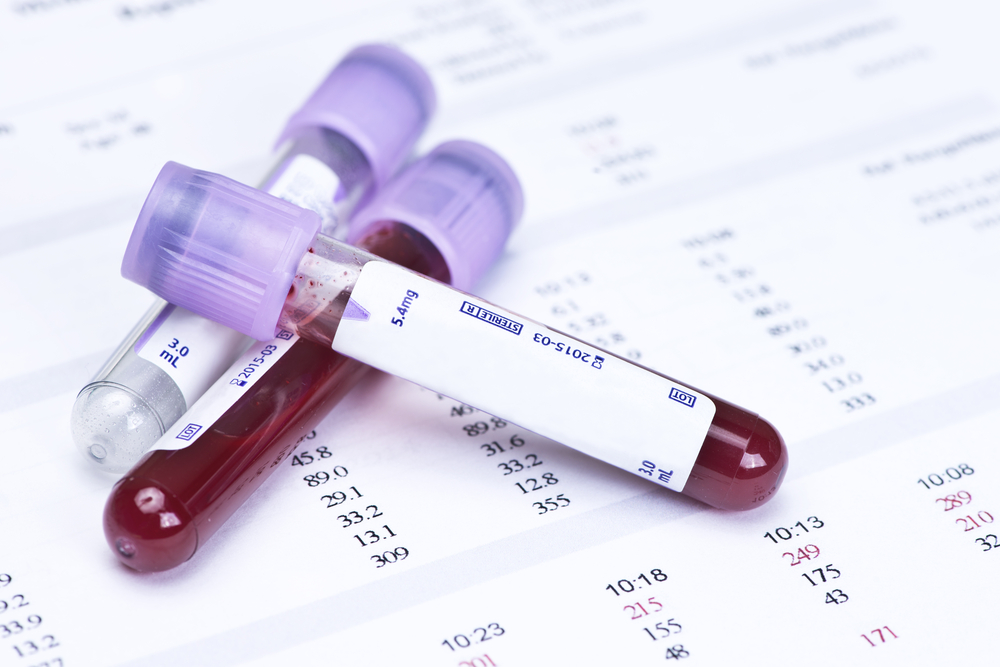This is where we share some of the comments, insights, and thoughts we receive from readers. Contact us at myamericannurse.com/send-letter-editor.
Nurse suicide
I am writing to express my thanks for your [Lillee Gelinas, editor-in-chief] editorial in the September 2018 issue of American Nurse Today. As a registered nurse who works in behavioral health nursing, I was so thankful to see you addressing suicide within the nursing profession. Suicide detection and prevention are common themes in my daily practice. Admittedly, I never considered the effect that suicide had on the nursing community.
As a BSN student at Millersville University, I have had an opportunity to increase my skills at attaining and understanding research. Your letter inspired me to research data on suicide as it relates to the nursing profession. I was shocked to discover that nurses have a higher rate of suicide than the general public. Though the research is limited, it appears that nurses have a higher rate of suicide compared to other healthcare providers. In your [editorial] you stated that there is limited research that focuses on this issue in regards to nurses. This is truly unfortunate. While suicide rates are increasing nationwide, the impact of suicide on [nurses and the profession] must be better understood to help decrease loss of life amongst our ranks.
The loss of any life due to suicide is a travesty. In the research that I reviewed, a few contributing factors were identified. In many cases, a history of depression was a common feature of those who took their own lives. This is true in both the general population and amongst nurses. Burnout, not being able to provide adequate care, and overwhelming work demands were seen as issues that increased a nurse’s risk for depression. Smoking and substance abuse were seen as factors that put nurses at a higher risk of depression and suicide. The most interesting contributing factor was a nurse’s knowledge [of] and access to medications. The use of medications as a form of suicide is the leading cause of death for nurses. More research into the link between knowledge and usage of medications and the connection to successful suicides would be valuable to help gain insight and reduce the risk of occurrence. There was also some information about the lack of mental health treatment accessed by nurses. Through education and supportive environments, maybe this trend can be reversed. Interestingly, a generalized list of suicidal risk factors listed working in the healthcare field as a risk for both depression and suicide.
I am so thankful that American Nurse Today has begun the conversation about suicide and [nurses]. I look forward to the article in the October issue entitled “Suicide among nurses: What we don’t know might hurt us.” I hope to gain more knowledge and insight into this issue and the impact it has on my peers. It is my hope that through this insight my fellow nurses [and I] can increase our vigilance and positively impact our profession.
Gillian Withers, RN
Mechanicsburg, PA
Patient violence
I am writing to you in response to the article “Patient violence: It’s not all in a day’s work.” Providing nursing care in a busy level II trauma center emergency department, I am acutely aware of the prevalence of violence toward staff. The article shockingly reveals that “67% of all nonfatal workplace violence injuries occur in healthcare, but healthcare represents only 11.5% of the U.S. workforce,” exposing the vast disproportion of workplace injuries in relation to the field of healthcare. Nurses and employers cannot afford to continue this culture of acceptance with regard to patient violence. I support the use of workplace violence prevention committees to increase safety for healthcare workers by assessing barriers to reporting violent incidents and ensuring appropriate follow up when reporting does occur.
As suggested in the article, workplace violence prevention committees are essential to providing the necessary ongoing assessments of staff safety as well as follow up to any incidents that occur. The Emergency Nurses Association (ENA) provides a wealth of resources within their online Workplace Violence toolkit, including a printable staff assessment survey addressing various aspects of violence toward staff and barriers to reporting incidents. In response to the article’s call for influencing organizational safety by sharing best practices, I plan to present the ENA’s staff assessment survey to my organization as a starting point for proposing a workplace violence committee. The ENA’s 2010 Workplace Violence Surveillance Study revealed many nurses did not report violent incidents because they did not believe it was beneficial to do so. This culture holds true for the emergency nurses and staff I work alongside, despite the presence of reporting procedures and an online system to do so. Without a committee assessing barriers and educating nurses of the importance of reporting, this culture of under-reporting will remain.
American Nurse Today published the article “Patient violence: It’s not all in a day’s work” at this pivotal time where we must hold each other and our organizations accountable for changing the culture regarding patient violence toward staff. It truly is not all in a day’s work and we must take the initiative to begin discussions about culture change and the importance of reporting violent incidents. Nurses must advocate for essential workplace violence prevention committees to ensure ongoing assessment and follow up of incidents, securing a culture of safety for both patients and staff alike.
Camellia Austin, RN, CEN, CPEN, TCRN
Asheville, NC
New nurse managers
I am writing to you regarding the article “New nurse managers step up to the leadership challenge.” I am a new nurse manager myself with less than 7 months experience in a leadership role. I think the article hit key components that can be a struggle during the transition process, but I believe establishing a leadership style is equally as important. During my mentorship, I learned about the different leadership styles and determined that I wanted to develop into a transformational leader. There are eight qualities of a transformational leader…self-knowledge, authenticity, expertise, vision, flexibility, shared leadership, charisma, and the ability to inspire and motivate (Ward, 2002). By determining a leadership style, a new leader can conduct a self-assessment and find areas of opportunities. I, for example, discovered my lack of vision and was able to align my goals with those of my organization. I was also able to learn how to motivate and inspire others to reach the goal envisioned (Ward, 2002).
Conflict management is another important skill for a new nurse manager. Unfortunately, I had been in a conflict resolution situation without any proper guidance and it led to less than optimal outcomes for the parties involved. Typically, people will apply the same conflict management style because they are comfortable with it, but a leader should use the style best suited for the situation at hand (Sportsman & Hamilton, 2007).
I am glad that the article discussed burnout for the nurse manager. As a new member of the leadership team, I agree that it can be difficult to create a healthy work-life balance. I felt a continuing need to be there for my team at all times, which led to long work days. I found myself being at work, but not being productive as a leader due to fatigue. It is important for new nurse managers to understand their time limitations and work constraints. I learned that it was okay to ask for help and clarification with tasks, as well as saying “no” to some things.
Krystal Mantei, BSN, RN-BC
San Antonio, TX
Staff scheduling
In the last 20 years, more than 300 articles have discussed various problems associated with staff scheduling. As a nurse leader who has managed staffing at the manager, director, and chief nursing officer level, I was delighted to read the article “The imperative for an electronic nurse scheduling system.” This article established the advantages of using a workforce management tool while keeping frontline staffing needs first and foremost. Nurse leaders have spent far too many hours developing and revising schedules on near daily, and sometimes, hour-by-hour basis. I found myself spending as much as 40% of my day on scheduling staff, only to find that once I finished, the schedule was outdated. It was difficult to keep up in real-time with all the changes occurring. I was also always fearful that I would exceed my department’s budget by inadvertently placing staff members in overtime. As the article points out, one advantage to an electronic nurse scheduling system (ENSS) is that the schedule can be completed “in the moment” and circulated to all staff immediately. The ENSS also helps nurse leaders succeed in their ever-expanding roles in areas such as budget management, staff satisfaction, productivity, and retention.
Embracing new technology that improves and transforms healthcare is important for nurses, especially as nurses continue to gain new knowledge through advanced academic avenues such as doctor of nursing practice (DNP) programs. Nurses developing leadership skills must be able to select and use information systems and technology tools that support and help to improve patient care. The ENSS systems are an excellent way for nurse leaders to leverage technology to empower their staff, which in turn can transform the patient’s experience while providing an excellent return on investment.
Genia Wetsel, MBA, BSN, RN, CENP, NEA-BC
Fort Worth, TX
Sepsis protocol in action
I am writing in response to the article “Sepsis protocol in action.” My purpose for writing this letter is to emphasize the importance of having evidence-based protocols and being familiar with the protocols in your workplace. The purpose of having protocols is to provide direction and promote consistency in the way nurses respond to certain issues that can arise with patients. This way a nurse can respond quickly and efficiently with a set of steps that are already in place for them to follow. Protocols are very important in achieving the best possible patient outcomes and nurses should familiarize themselves with their institution’s protocols and know where to find them in a pinch. Nurses should also be involved in the creation and development of protocols in their workplace.
Most every medical institution has a set of protocols to be followed by their healthcare providers to benefit their patients. From sepsis protocols to the time-out protocol before performing an invasive procedure, there are protocols for almost everything. Protocols should be written based on research and evidence-based practice instead of tradition. The world of healthcare is changing all the time with the discovery of new information and the protocols being used should change with it. We wouldn’t be where we are today in healthcare if we only practiced based on the way things have been done in the past. A journal article from The Journal of Continuing Education in Nursing titled “Developing policies and protocols in the age of evidence-based practice,” recommends revising current protocols whenever significant studies find new evidence. The article also states that the opportunity for nurses to create change and improve patient outcomes is what drives nurses to participate in evidence-based practice. I believe that nurses should be involved in developing evidence-based protocols since we spend the most time with patients at the bedside. A nurse sees first-hand the issues that need to be addressed and can be an abundant resource in the formation of new protocols with their clinical expertise.
The [same] article [also] observed that current electronic software for protocol creation, storage, retrieval, and maintenance in healthcare settings allows for storage of multiple protocols, which may make them difficult to locate. This is an issue that many nurses come across and one reason why protocols aren’t being used as they should be. Nurses are extremely busy throughout their shift and sometimes don’t even get to take a break. When a serious or difficult situation arises with a patient you have to act fast. If the nurse has to take more than 10 minutes searching online for the correct protocol to use, chances are that protocol isn’t going to be used. Healthcare institutions should develop a more user-friendly and easily accessible way to retrieve protocols when nurses need them. This is why nurses should familiarize themselves with the most important and most widely used protocols in their workplace so that they have…basic knowledge…when needed.
Implementing evidence-based protocols and being familiar with those protocols is essential in providing the best patient care possible. Nurses need to be accurate and consistent in their care each and every time a situation occurs. The profession of nursing is full of compassion toward the patients we take care of, which is motivation to become more involved in the implementation and development of protocols to benefit our patients. Each and every nurse should make the effort to become familiar with and follow the evidence-based protocols that are in place where they are employed. I plan to take the information I have learned and share it with my colleagues in hopes of spreading the word about how important evidence-based protocols are to us as nurses and patient outcomes.
Brenna Goodman, RN, RN-BSN Student
Winston-Salem, NC
Adolescent self-injury
I am responding to [the] article “Why do adolescents engage in nonsuicidal self-injury.” As an ED nurse, I see many patients a day, and have seen multiple with old or new linear scars as addressed in the article. [Because] I am only with my patients briefly before being discharged, I would like to respond in particular to the importance of the “referral” process. Although referring a patient to a psychotherapist or specialized psychiatric provider is essential, getting an appointment can often take longer than expected, and could potentially end with the patient becoming noncompliant. I would like to propose an outlet that enables troubled adolescents to achieve stress relief while waiting to see a provider: group therapy.
Although self-harm is usually not linked to patients wanting to end their lives, it is not unheard of, therefore we should treat self-harm just as intensely as we treat suicidal ideation or attempt. The Centre for Suicide Prevention Self-harm and Suicide [toolkit] focuses on the differences and similarities of self-harm and suicide. The article states the purpose of self-harm is “done to avoid suicidal impulses” (Klonsky, May, & Glenn, 2014) and goes on to express that eventually the efforts of self-harm are not an effective release for the victim, and that is when things could progress to suicide. According to goodtherapy.org, group therapy is a good way to allow patients of similar backgrounds to meet others, share their experiences, and know they are not alone in the world. Group therapy could also include the alternative methods of stress relief such as meditation, art expression, or musical therapy. Adolescent support groups would allow patients to make new friends, build each other up, and potentially reduce potential for self-harm to progress to suicide.
As a nation, we should all work together to provide better mental healthcare for our communities. I would like to see us work as a whole and begin to [incorporate referrals to] group and alternative therapies to our mental health patients using self-harm as an outlet for stress and coping, while waiting for appointments to become available with psychiatric specialists.
Amber Autry, RN
Jacksonville, NC


















